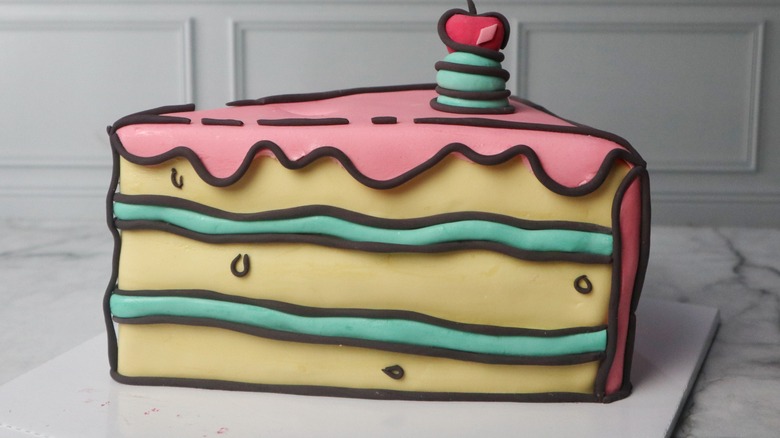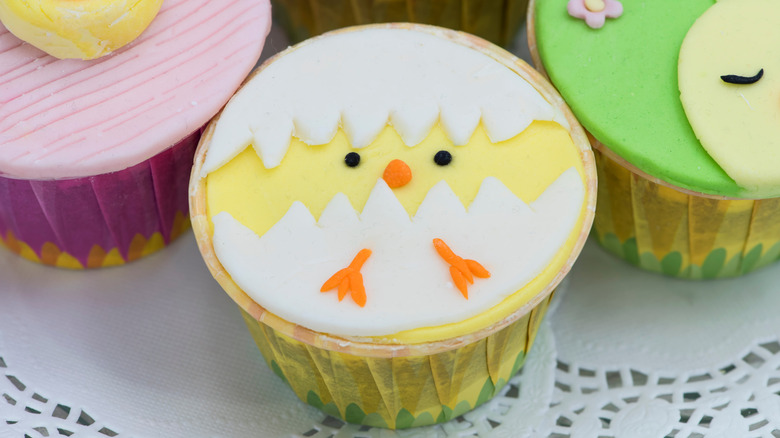Working With Fondant Isn't For The Faint Of Heart. Here's How To Prevent Cracks
Some people love and some hate it, but fondant is a popular choice for making cakes look perfect and for getting every detail just right. It can also be used to create figures and can be a lifesaver if you aren't great at smoothing cake edges with buttercream. But fondant can also be challenging to work with, with the percentage of things going awry being very high. If your fondant is cracking or ripping every time you try to put it on a cake, there are several ways to prevent this from happening (and even some tricks to fix any rips or tears). From rolling fondant on a silicone mat to using a measuring tape, switching up the way you roll your fondant could be the key to success.
Working with fondant isn't for the faint of heart; it requires a lot of practice (and plenty of failed attempts). If you need some help with your fondant skills, here's how to prevent cracks in fondant (and a simpler method you may prefer to draping).
Troubleshooting fondant cracks
There are many reasons fondant might crack. One common reason is that the fondant is too dry, which can happen if you spend too long rolling it out. Large-scale bakers use fondant rollers to get the perfect width rapidly, but you can make this happen without investing in industrial equipment using a measuring tape.
For best results, roll the fondant one-quarter to a one-eighth inch thick (any thinner, and it's likely to tear). Once that width is achieved, put it on a crumb-coated, cold cake. Another reason fondant dries quickly is using too much powdered sugar or cornstarch to prevent sticking, as both ingredients will cause the fondant to dry. Try rolling fondant on a silicone mat instead of adding a non-stick component.
It's also a good idea to check the expiry date on your bucket of fondant before using it — large wholesale stores might be selling outdated fondant, and old fondant can crack. If you've checked all of these things and the fondant is still breaking, it's possible the method you're using isn't the best option.
Another option for covering a cake in fondant
Most new bakers roll a large piece of fondant and then cover a cake with it by smoothing the sides with a fondant smoother. But there's another excellent way to make sure cakes are covered flawlessly with fondant. The paneling method requires some measuring, but it's much simpler than attempting to drape heavy fondant over a cake. To panel fondant, roll out a small piece of fondant to cover the top of the cake (do this by measuring the top of the cake and then adding two inches) and place it on a piece of parchment paper. Pop that top piece in the freezer for a few minutes while you roll out the side piece.
Measure the height and width of the cake next. Roll out a piece of fondant to cover the sides and height with extra to spare (a few inches extra should do the trick). Cut the edges of the fondant in a straight line using a ruler, place on a piece of parchment, and freeze. Remove the first piece of fondant from the freezer and place it on top of the cake, trimming any excess.
Then, remove the larger fondant from the freezer and wrap it around the cake. Trim off any excess and press the seams together. This method should prevent fondant from ripping and can be much simpler than smoothing out drapey pieces.


